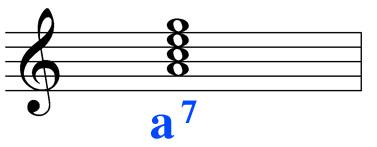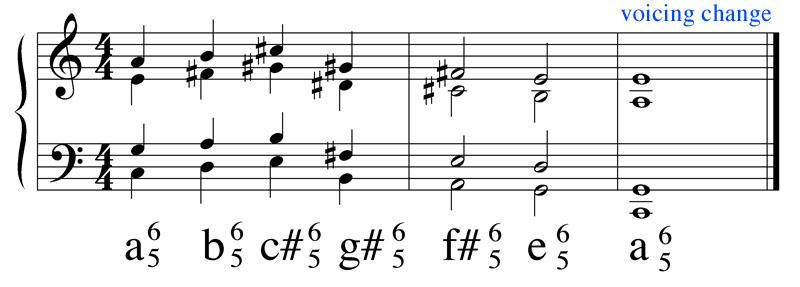13 Nonfunctional Tonality
Nonfunctional Tonality
The twentieth century began with the question of how tonality could develop beyond the hierarchical structures that had governed it for the past two hundred years. Some composers extended sonorities beyond the seventh and ninth chords, while others explored varying chromatic augmentations and extended modulations (such as Max Reger). Another solution, however, arose from the so-called School of Impressionists. These composers, such as Frenchmen Claude Debussy (1862-1918) and Maurice Ravel (1875-1937), the English William Baines (1899-1922), and the American Charles Tomlinson Griffes (1884-1920), began using techniques that found inspiration in already established sonorities, only applied in new ways.
Index
A. Planing
Choosing the Sonority. One of the most straightforward techniques used to eschew the traditional implementation of chords as part of a hierarchical progression involves the parallel motion of a single sonority. As the Impressionists were so fond of doing, we will begin with an evocative chord. Note that in nonfunctional harmony we cannot usually apply the standard tonal analytical tool of Roman numeral notation. Instead, we need to revert to the simple idea of naming the chord based on its root and quality.

Parallel Motion. After voicing this initial chord, we can transpose it and place each statement of the same sonority in succession. Although this may appear to produce what visually looks like a chord progression, in effect there is no creation of tension (being that all of the chords are of the same quality) and thus no need for release. What we lose in tension, we gain in terms of greater flexibility regarding phrase length and rhythmic disposition of each statement. Although typically each iteration of the chord will have the same voicing, some variance can be presented, as with our final chord in the example below.
Note that since each chord has exactly the same intervallic structure, the more we transpose it the further the series of chords fail to fall under one traditional key signature, which further distances this style of writing from the Common Practice.

B. Chord “Progressions”
Voice Leading in Nonfunctional Harmony. When approaching the question of voice leading in nonfunctional chords, we can apply many of the same principles from traditional harmonic practices. However, the use of the word ‘progression’ may be misleading in this case since the term implies hierarchical relationships between the sonorities. Overall, this style tends to be most effective when using more complex chords, rich in character, which can evoke a variety of keys.
When deciding what chords to choose in a succession of nonfunctional harmonies one can employ a common tone to segue from one sonority to another. In the example below, for instance, the melody in the first bar consists of an A rising to a C. Therefore, in our first harmony we have included a C in the chord (D7). We used this technique again in bars two and three (see blue outline).
Planing, while useful, can become tiresome if used to frequently. If used sparingly and carefully, it can be very effective within a larger context as the technique draws attention to one type of sonority.
Using enharmonic tones to tie two discreet harmonies together allows the composer to quickly shift from one key region to another. In the example below in bar four the Ab is re-interpreted as G# in the next harmony.
Non-harmonic tones are equally valid in this style as in the Common Practice, (see red circles below) and can bring temporal tension to the otherwise ambivalent chords.
Global key relationships can still be maintained, even within a style such as this that suppresses much of the scalar-based triadic harmonies associated with Common Practice, cadence-driven writing. In our example we begin with a D based sonority and cadence on an a minor triad: a tonic/dominant relationship, however veiled, remains.

For the composer: One way to experiment in this style is to begin by writing a simple diatonic melody. For each note in the melody see how many different interesting chords this pitch can fit into, either as root, third, fifth, seventh, etc. and draft them out on paper. Then at the keyboard, use your intuition to choose a sequence of chords from these trials to match the emotional nuances you want to provide the melody. See if some common tones or enharmonic re-spellings can help to connect the nature of the chords you choose, or simply invoke the planing technique and use the same chordal structure for a few melody notes in a row.

